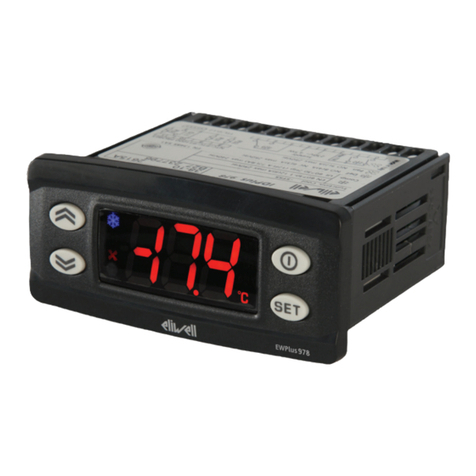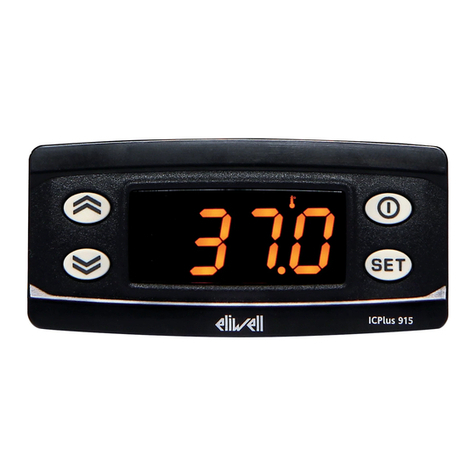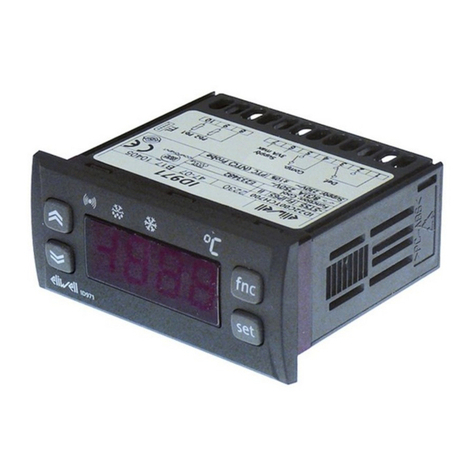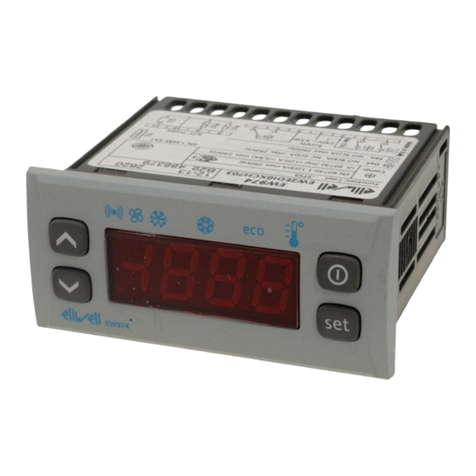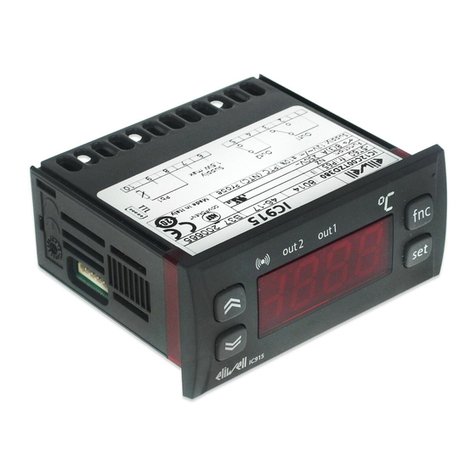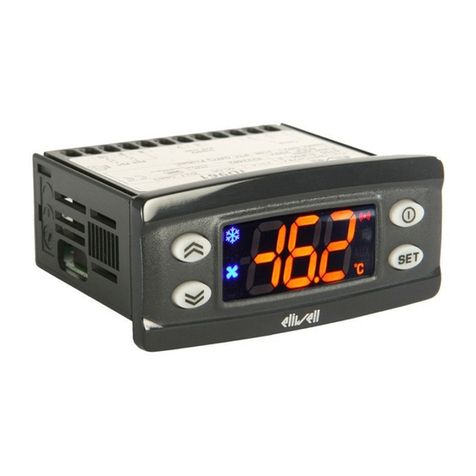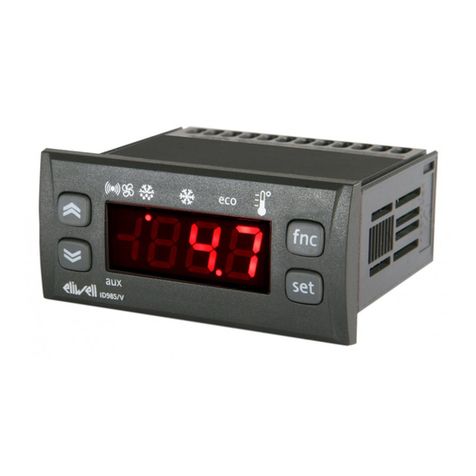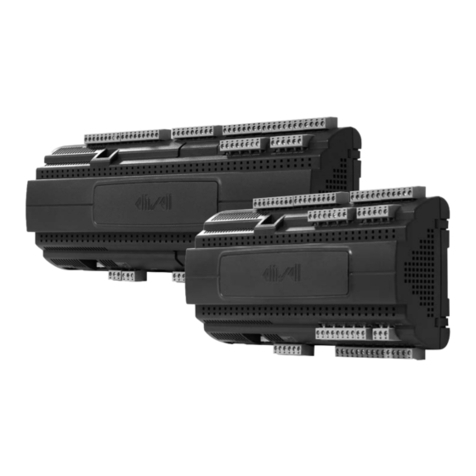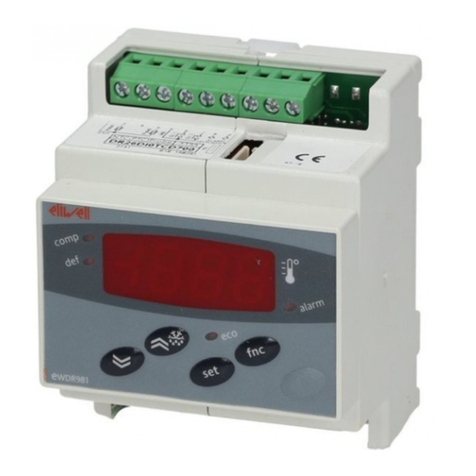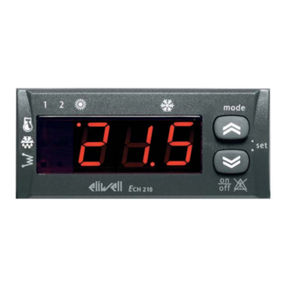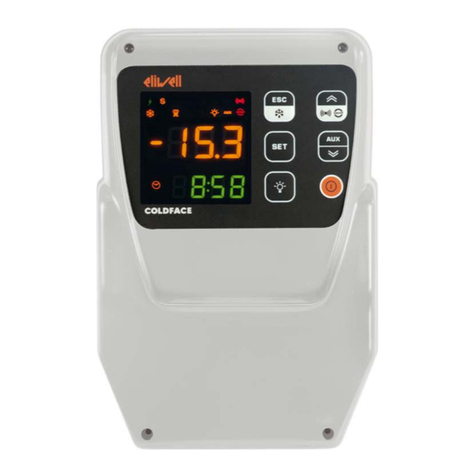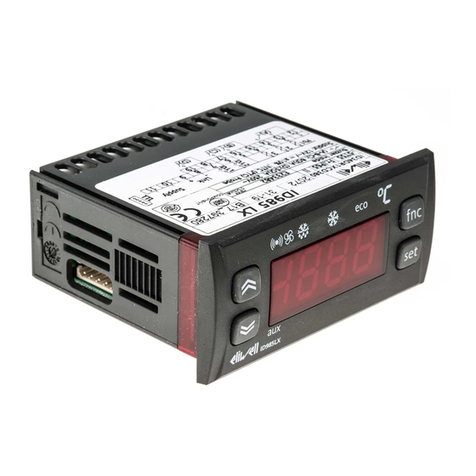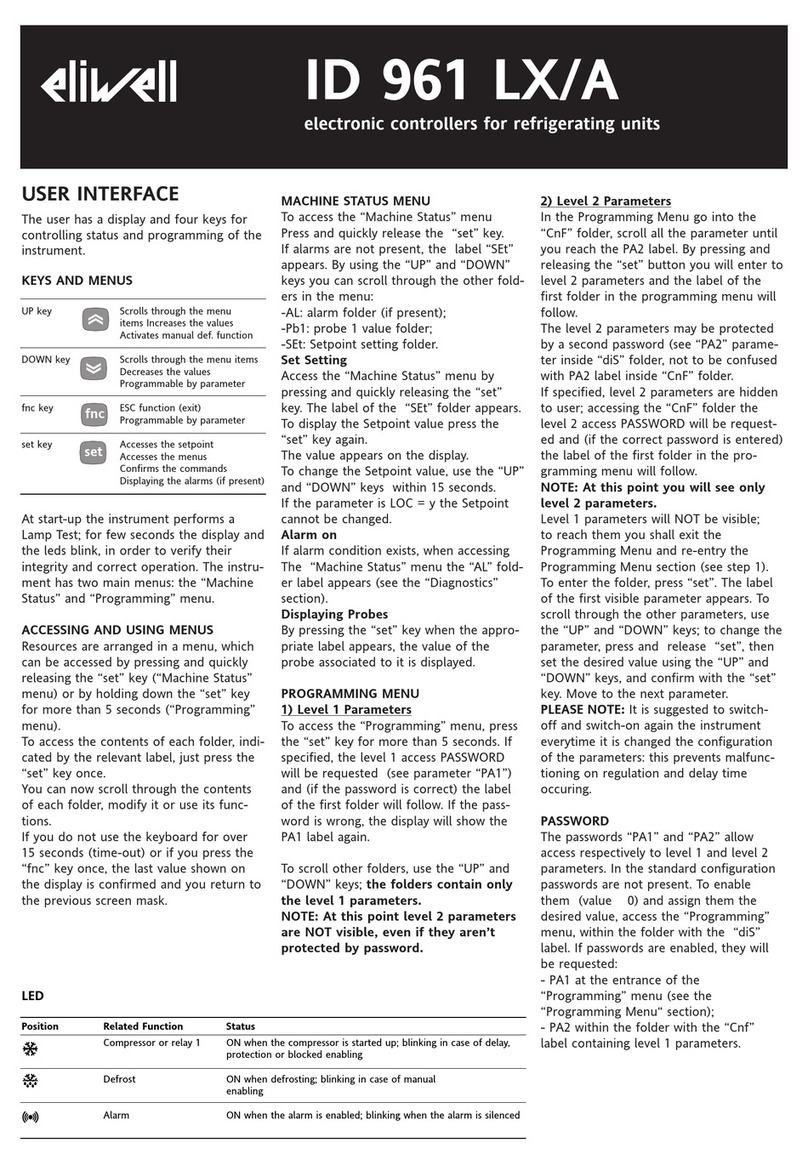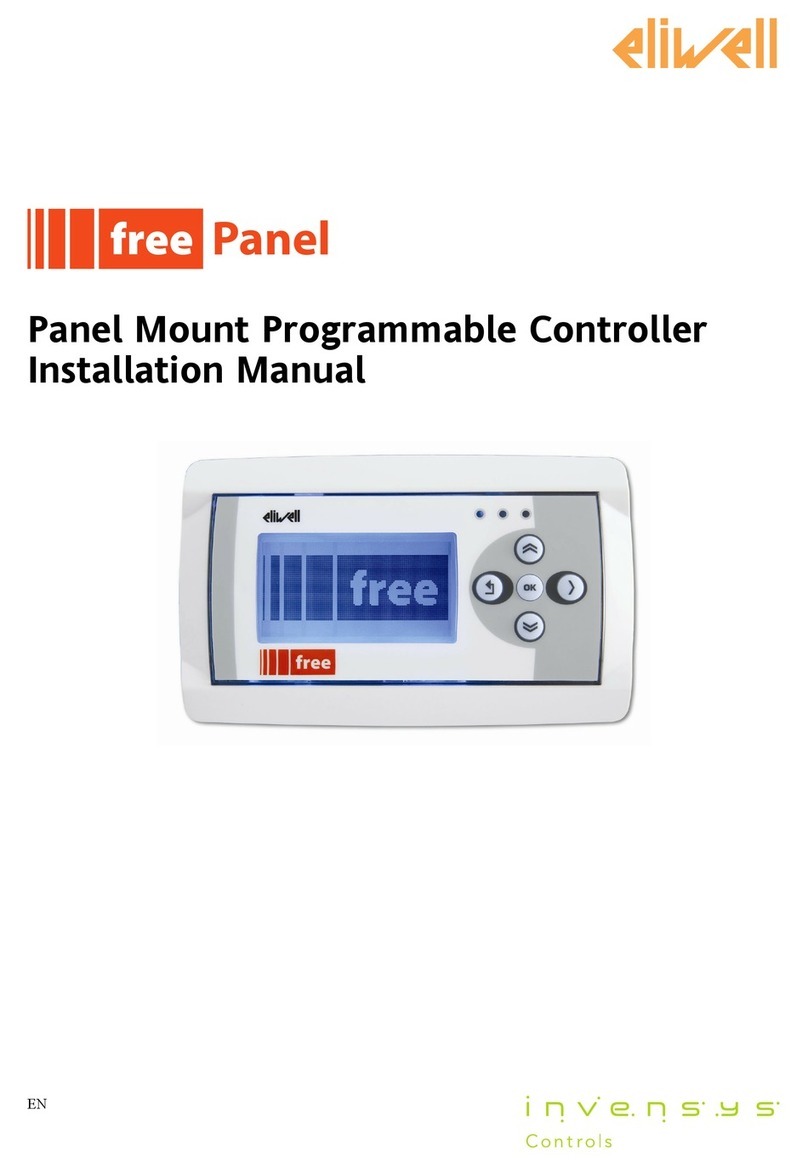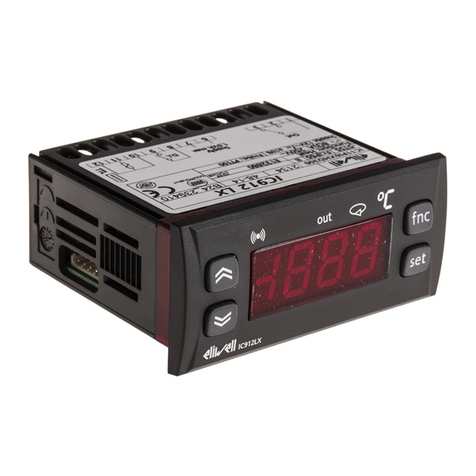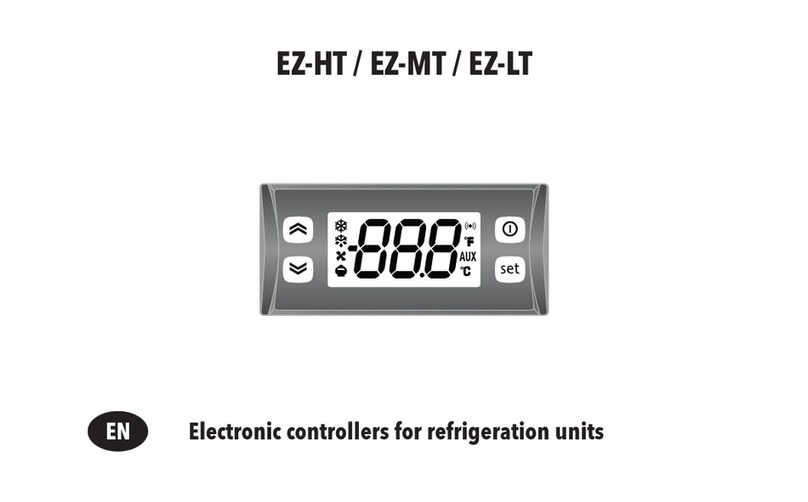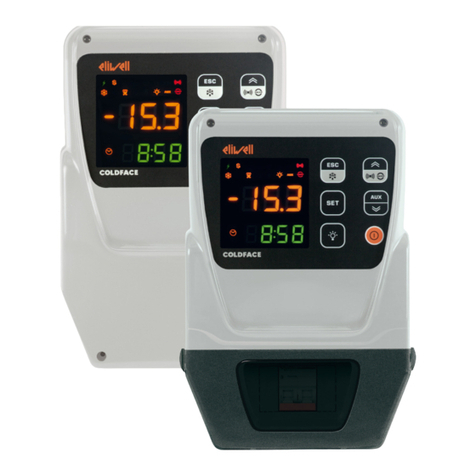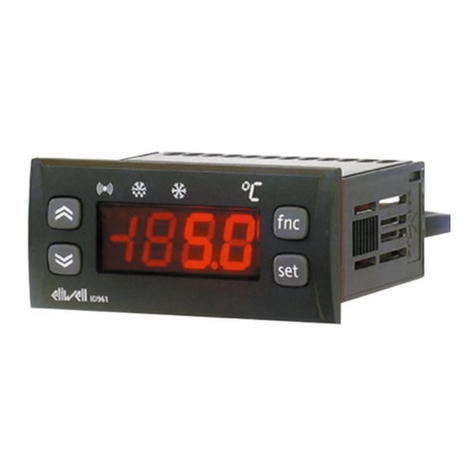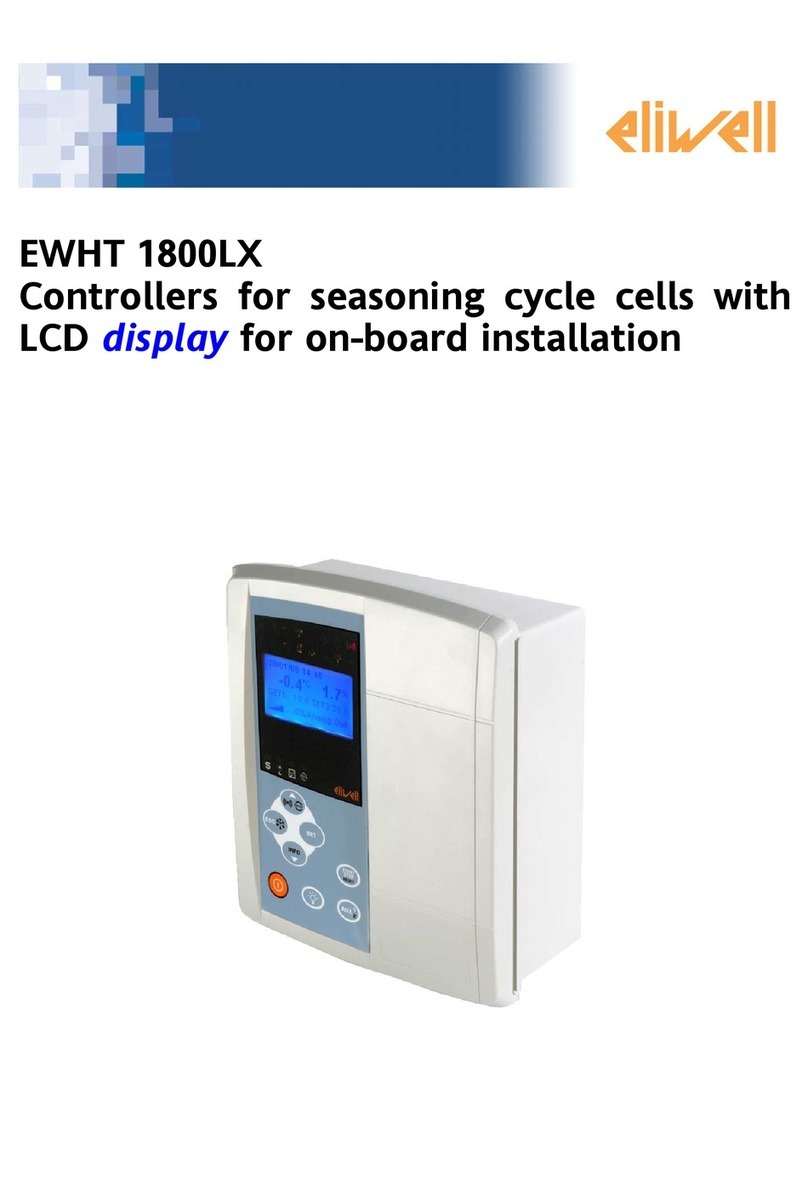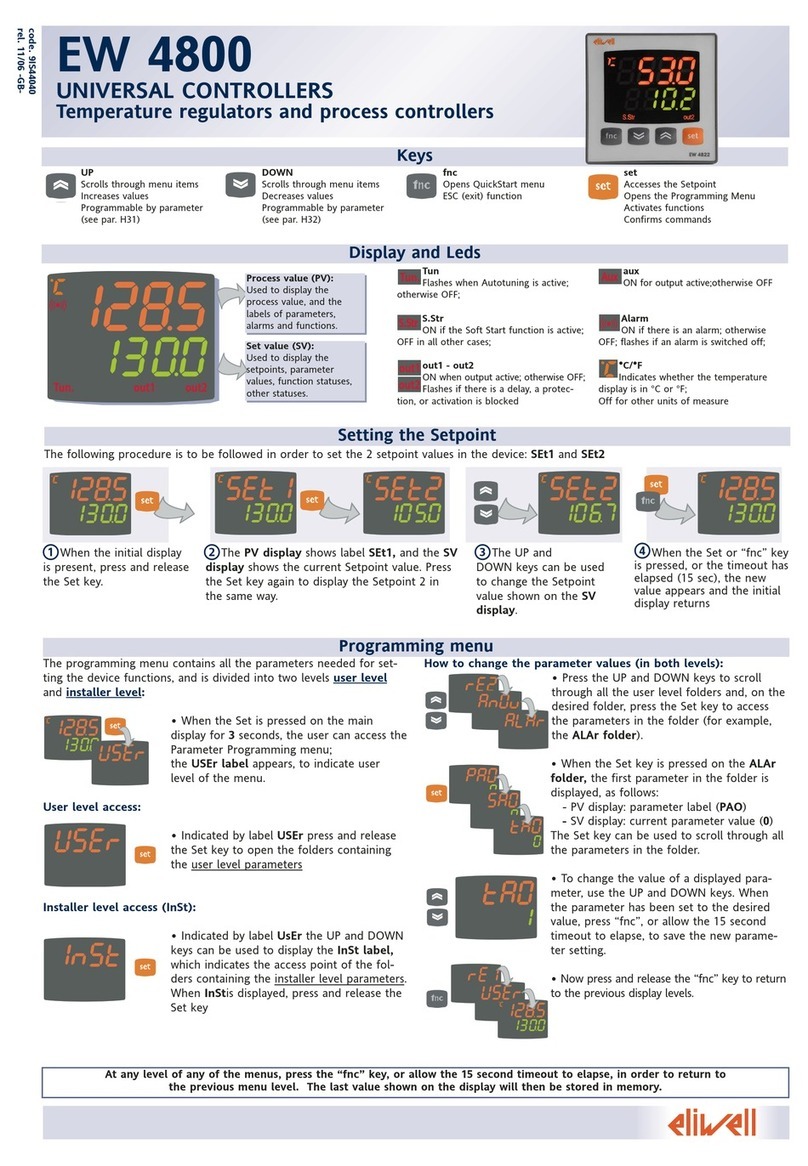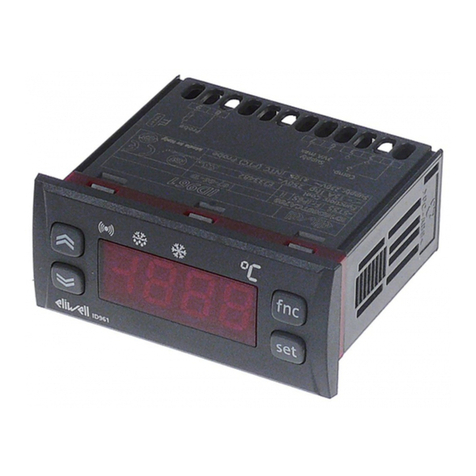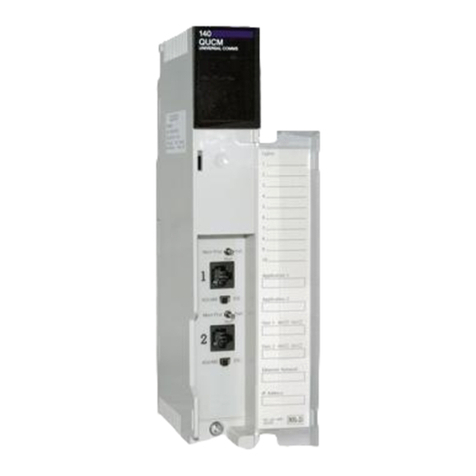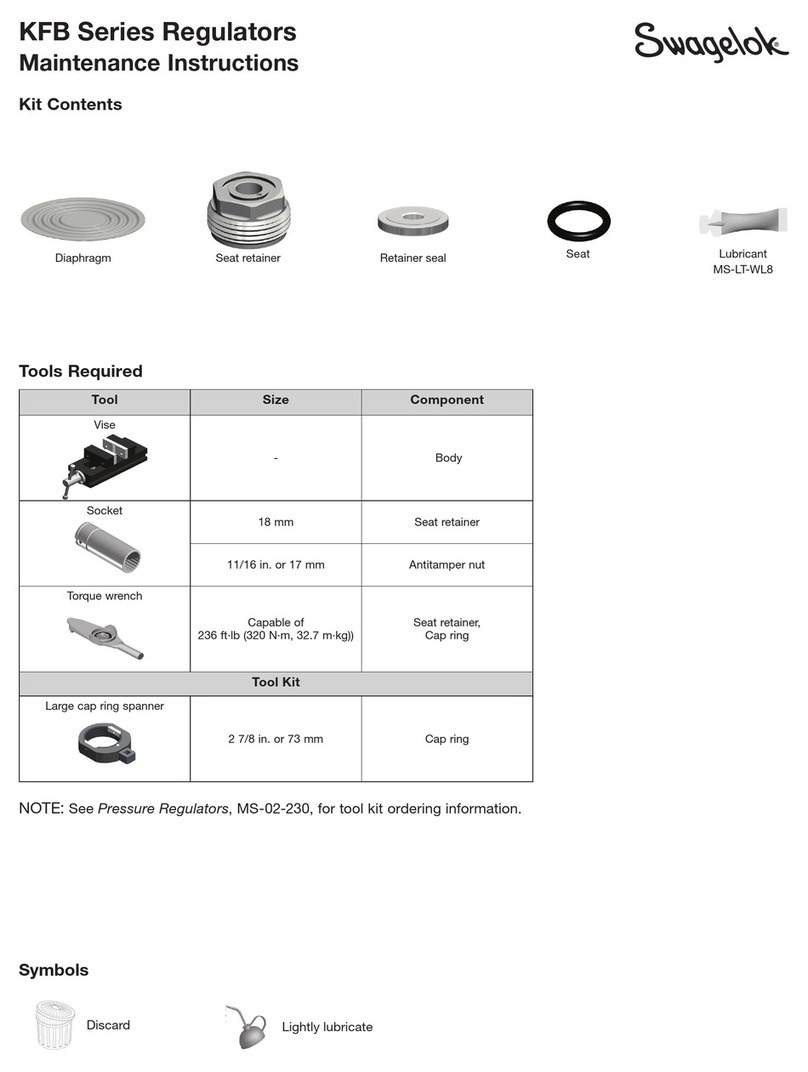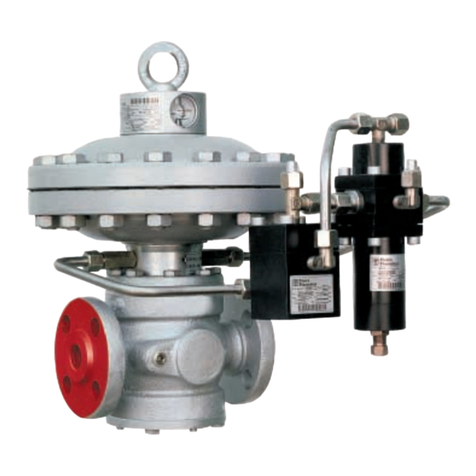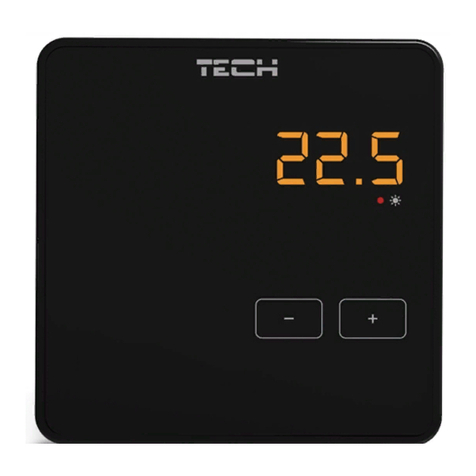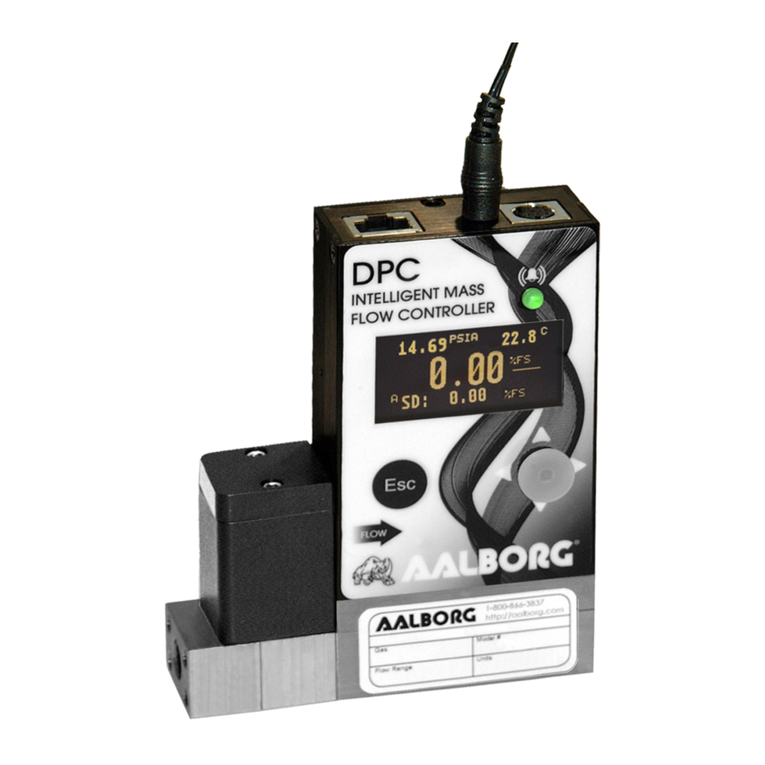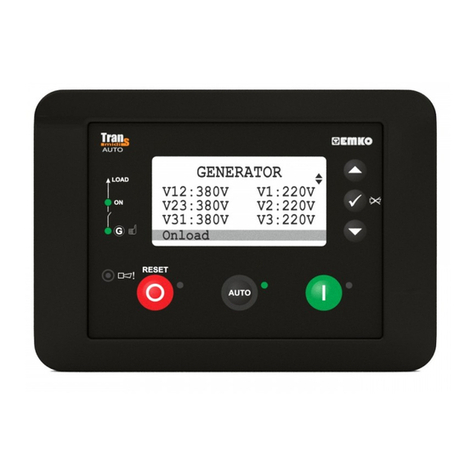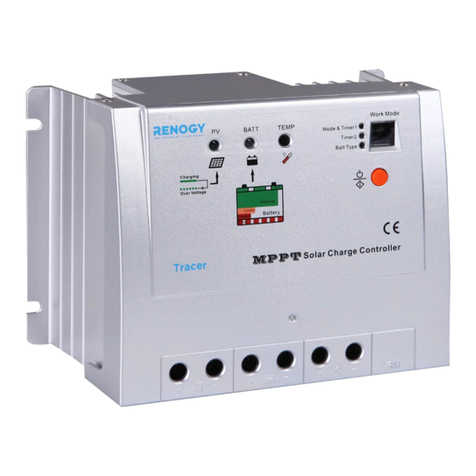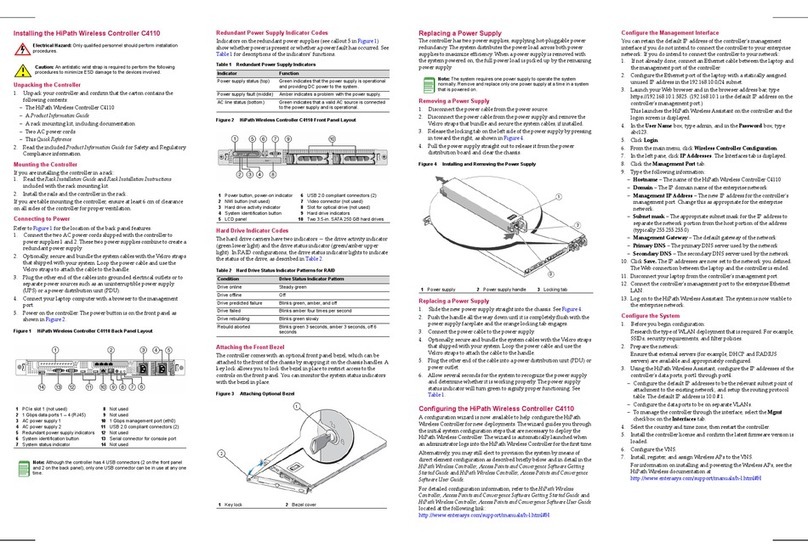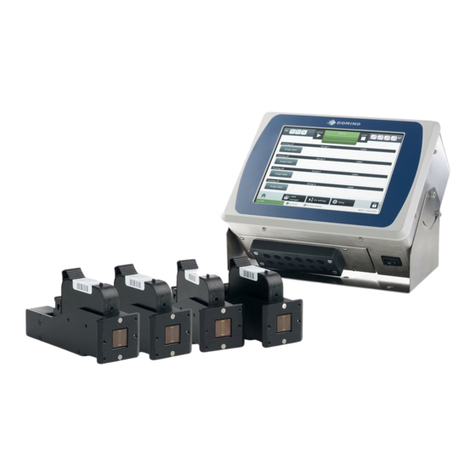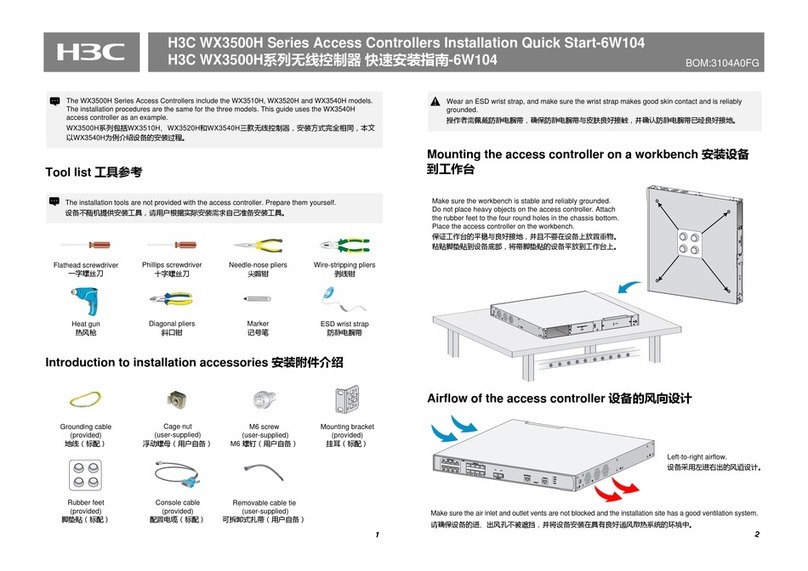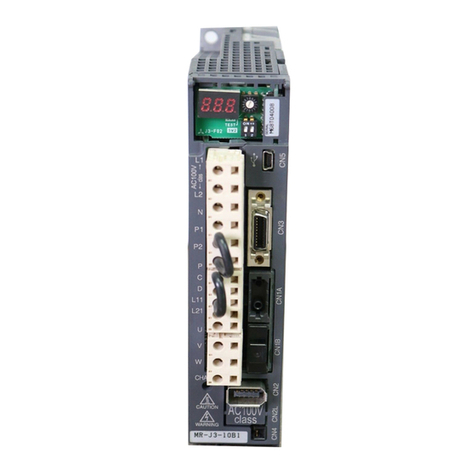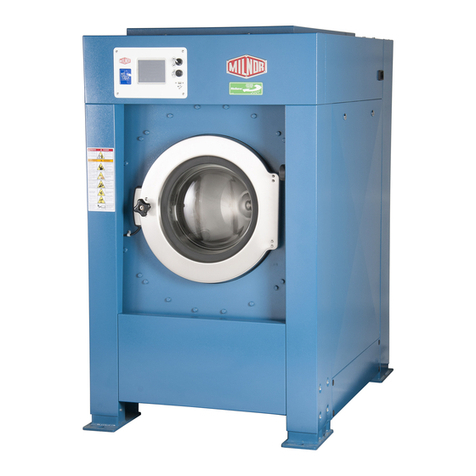KEYBOARD LOCKING
The instrument includes a facility for dis-
abling the keyboard, by programming the
“Loc” parameter (see folder with “diS”
label). If the keyboard is locked, you can
still access the programming menu by
pressing the “SET” key.
The Setpoint can also be viewed.
DIAGNOSTICS
The alarm condition is always signalled by
the buzzer (if present) and by the led of
the alarm icon
The alarm signal produced by a faulty
thermostat probe (referred to probe 1)
is shown as E1 on the instrument display
The alarm signal produced by a faulty
evaporator probe (probe 2) is shown as E2
on the instrument display Other signalling
alarm are not shown on the instrument
display, but from the “Machine Status”
menu within the “AL” folder. The signals
for maximum and minimum alarms do not
appear on the instrument display but are
viewable on the “Machine Status” menu in
the “AL” folder, with the label “AH1” or
“AL1”.
The regulation of the maximum and mini-
mum temperature alarm refers to the
thermostat probe. The temperature limits
are defined by the parameters “HAL”
(maximum alarm) and “LAL” (minimum
alarm).
INSTALLATION
The instrument is designed for panel
mounting. Make a hole of 29x71 mm,
insert the instrument and fix it using the
brackets provided. Do not mount the
instrument in humid and/or dirty places; it
is suitable for use in ordinary polluted
places. Ventilate the place in proximity to
the instrument colling slits.
ELECTRICAL
WIRING
Attention! Never work on electrical con-
nections when the machine is switched on.
The instrument is equipped with screw ter-
minal boards for connection of electrical
cables with a diameter of 2.5 mm2(one
conductor only per terminal for power
connections).
For the capacity of the terminals, see the
label on the instrument.
The relay contacts are voltage free. Do not
exceed the maximum current allowed; in
case of higher loads, use an appropriate
contactor. Make sure the power supply
voltage complies with the one required by
the instrument.
In 12V versions the power supply must be
provided by a security transformer with
the protection of a delayed 250 mA fuse.
Probes have no connection polarity and
can be extended using a regular bipolar
cable (note that the extension of the
probes affects the EMC electromagnetic
compatibility of the instrument: pay
extreme attention to wiring).
Probe cables, power supply cables and the
TTL serial cables should be distant from
power cables.
CONDITIONS OF USE
PERMITTED USE
For safety reasons the instrument must be
installed and used according to the
instruction provided and in particular,
under normal conditions, parts bearing
dangerous voltage levels must not be
accessible.
The device must be adequately protected
from water and dust as per the application
and must also only be accessible via the
use of tools (with the exception of the
frontlet).
The device is ideally suited for use on
household appliances and/or similar refrig-
eration equipment and has been tested
with regard to the aspects concerning
European reference standards on safety. It
is classified as follows:
• according to its manufacture: as an auto-
matic electronic control device to be
incorporated by independent mounting;
• according to its automatic operating fea-
tures: as a 1 B-type operated control type;
• as a Class A device in relation to the cat-
egory and structure of the software
UNPERMITTED USE
Any other use other than that permitted is
de facto prohibited. It should be noted
that the relay contacts provided are of a
practical type and therefore subject to
fault. Any protection devices required by
product standards or dictated by common
sense due to obvious safety reasons should
be applied externally.
LIABILITY AND RESIDUAL
RISKS
Invensys Controls Italy S.r.L. shall not be
liable for any damages deriving from:
- installation/use other than that pre-
scribed and, in particular, that which does
not comply with safety standards anticipat-
ed by regulations and/or those given here-
in;
- use on boards which do not guarantee
adequate protection against electric shock,
water or dust under the conditions of
assembly applied;
- use on boards which allow access to dan-
gerous parts without the use of tools;
- tampering with and/or alteration of the
products;
DISCLAIMER
This manual and its contents remain the
sole property of Invensys Controls Italy
s.r.l., and shall not be reproduced or dis-
tributed without authorization. Although
great care has been exercised in the
preparation of this document, Invensys
Controls Italy s.r.l., its employees or its
vendors, cannot accept any liability what-
soever connected with its use. Invensys
Controls Italy s.r.l. reserves the right to
make any changes or improvements with-
out prior notice.
TECHNICAL DATA
Frontal panel protection: IP65.
Casing: plastic body in resin type
PC+ABS UL94 V-0, inspection window in
polycarbonate, buttons in thermoplastic
resin.
Dimensions: frontal panel 74x32 mm,
depth 60 mm.
Installation: on panel, with drilling tem-
plate 71x29 mm (+0.2/–0.1 mm).
Use temperature: –5…55 °C.
Storage temperature.: –30…85 °C.
Use environment humidity: 10…90 % RH
(not condensing).
Storage environment humidity: 10…90% RH
(not condensing).
Viewing range: –50…110 (NTC); –50…140
(PTC) °C without decimal point (selectable
through parameter on 3 digit + 1/2mark
display.
Analog inputs: two PTC or NTC inputs
(programmable by parameter).
Serial: TTL for connection to Copy Card or
Televis system.
Digital outputs: 3 relay contacts: first con-
tact SPDT 8(3)A 250VA, second contact
SPST 8(3)A 250VA, third contact SPST 5(2)
A 250VA.
Measuring range: from –50 to 140 °C.
Accuracy: 0.5% better than end scale + 1
digit.
Resolution: 1 or 0.1 °C.
Power: 3 VA.
Power supply: 12 Va/cor 230Va.
Warning: check the power supply specified
on the instrument label; for relay and
power supply capacities, contact the Sales
Office).
ID 974 LX 2/4
DISPLAY
AH1
AL1
To silence alarms press any key.
Alarms are related to Setpoint and are considered
as the distance from the Setpoint itself.
ALARM
High temperature alarm (referred to
the thermostat probe or probe 1
Low temperature alarm (referred to
the thermostat probe or probe 1)




